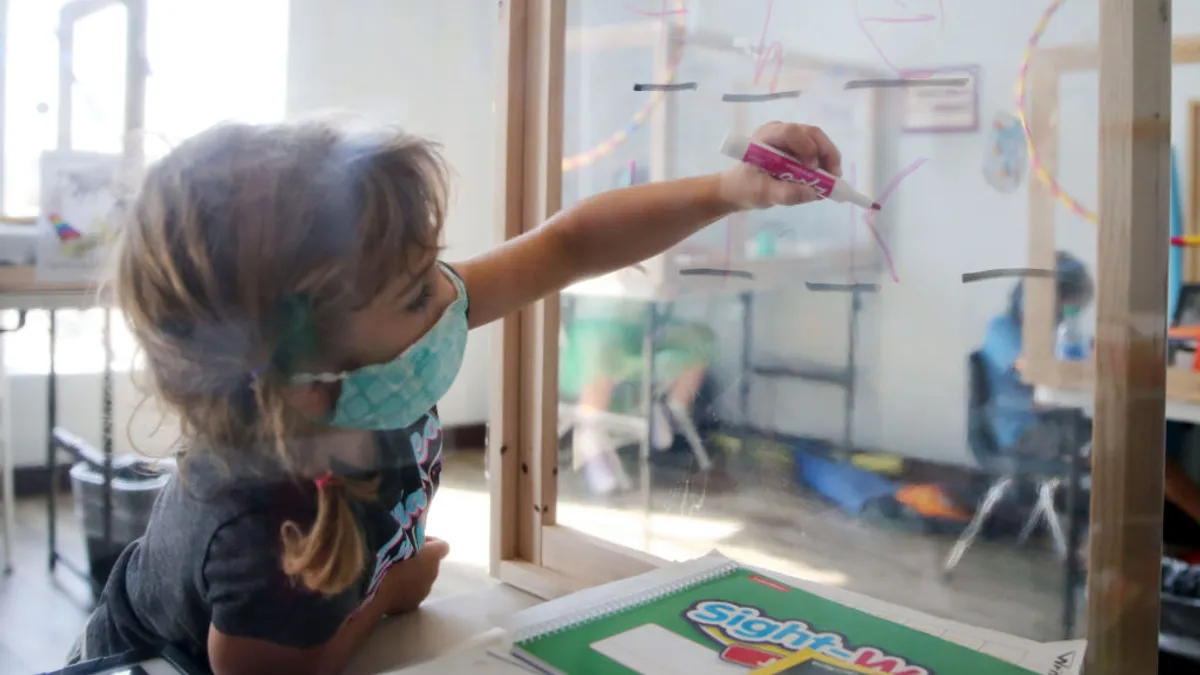Proposals to arm teachers commonly surface in the wake of mass school shootings, despite repeated resistance from school security experts, gun safety advocates, school law enforcement experts and teachers associations. And this time is no different.
Less than a month after the Uvalde elementary school massacre, Ohio Gov. Mike DeWine signed legislation Monday that will make it easier for teachers to carry firearms in schools by reducing the number of maximum initial training hours required.
The legislation reduces the required experience from more than 700 hours of training, or at least 20 years of experience as a law enforcement officer, to 24 hours of initial training and eight hours of annual school-specific training, according to Jay Carey, a spokesperson from Ohio's Department of Public Safety.
The new law also calls for investing $6 million to create a mobile training team for teachers. The vote was split almost completely among party lines.
Meanwhile, In Louisiana, a bill introduced by Rep. Danny McCormick was amended after the Uvalde shooting to include training for teachers to carry weapons in schools. That legislation was shelved this week when the legislative session ended Monday without a vote.
Eighteen states already allow any school employee in school to carry a firearm with permission from school authority, and nine states permit, in some form, school employees other than security to have guns, according to the National Conference of State Legislatures, which tracks the issue.
Days prior to signing the Ohio Bill, DeWine said in a statement on June 1 that he and state lawmakers worked "to remove hundreds of hours of curriculum irrelevant to school safety and to ensure training requirements were specific to a school environment and contained significant scenario-based training."
The Ohio Education Association said in a news release that it was "disappointed, but not surprised" at the new law.
“Our students and educators need to be in safe environments where they can focus on teaching and learning, not on the threat of having unprepared, woefully undertrained people—regardless of their good intentions—making split-second life-or-death decisions about whether to pull the trigger in a chaotic classroom full of innocent bystanders," said OEA President Scott DiMauro in a statement. “It’s absurd."
Columbus City Schools, the largest district in the state, expressed disappointment in the law and said it would continue to prohibit firearms on school grounds. "Our teachers and staff do not enter their professions to enforce laws," Jennifer Adair, president of the Columbus City Schools Board of Education, said in a statement. "The responsibility of public safety is that of our city, county, and state safety and law enforcement experts."
Multiple surveys have shown teachers oppose being armed in school. In Texas, where Uvalde's Robb Elementary mass shooting took place on May 24, 77% of 5,100 educators said they do not want to be armed to confront a school shooter.
School security experts also warn against the practice.
"Arming teachers is a high-risk, high-liability proposition," said Kenneth Trump, president of National School Safety and Security Services, based in Ohio.
"Teachers want to be armed with technology and textbooks, not firearms," Trump added. "We would not take a worker from the drive-thru window at McDonald's, give them a couple dozen hours of training, and have them teach 2nd grade. Nor should we give teachers a couple dozen hours of training with a gun and have them perform a public safety function — on top of being an educator."
Trump also pointed out that principals are not prepared and do not have the time to administer and oversee teachers who carry deadly weapons in schools.
Ron Avi Astor, another school safety expert and a professor of social welfare at the University of California, Los Angeles, pointed to data and research that shows settings saturated with firearms have an increased likelihood of accidental death. Considering this, arming teachers could "end up killing and injuring more than is expected," said Astor, who specializes in bullying and school violence, in an email. "It's a short-term, knee-jerk reaction that could have very harmful immediate effects on kids, short- and long-term."
Even trained school safety officers don't think it's a good idea: The National Association for School Resource Officers recommends against arming teachers. Training teachers about gun use and safety prior to carrying them in schools, NASRO said in 2018, "will not eliminate risks associated with arming teachers, they will help mitigate those risks."
Training — even for law enforcement officers — should also be ongoing "because using a firearm effectively and safely in a stressful situation is a skill that degrades quickly," Mo Canady, NASRO executive director and a former SRO, said in an email. "In that sense, the preparation to use a firearm is never truly 'complete.'"
Canady said he would practice at the shooting range at least once a month when he was an SRO.
And despite training, teachers will still unlikely be mentally prepared to take a student's life if needed, Canady added.
Canady agrees that arming teachers could result in accidental injuries to bystanders or school staff and even SROs themselves, especially in high-stress scenarios like an active shooter. "Few realize how that stress affects the fine motor skills required to aim and fire a weapon accurately," Canady said.
More guns in schools could also in turn lead to prison-like school environments that don't make students feel any safer, Astor said.
"Let's have an evidence-based, public health discussion on ways to reduce harm in schools without turning our society into the one giant prison, or a return to the Wild West — where everyone needs to carry their own gun," Astor said. "That does not save lives, more innocent people will then needlessly die."






















